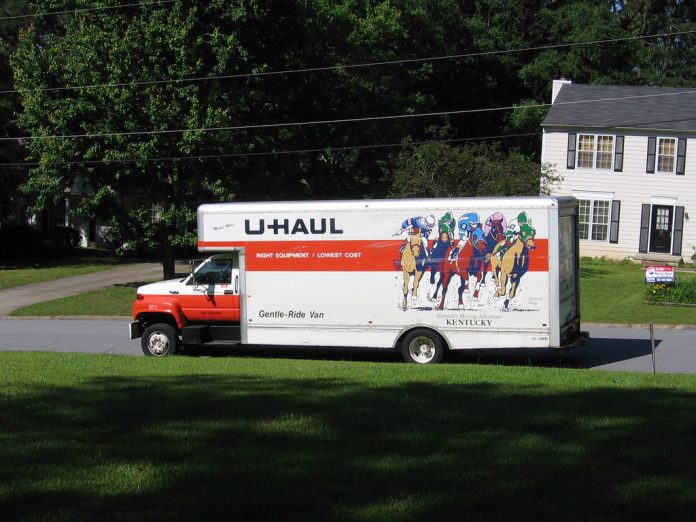South Dakota was a top state in 2021 for inbound migration whereas Nebraska and Illinois had high levels of outbound migration. When looking at these states it’s hard not to factor in their tax situations.
Many people will tell that people choose to live somewhere based on factors like the weather or proximity to family, and that taxes don’t enter into the equation. While there is a lot of truth to that understanding, when taxes reach a certain point, they can cause people to alter their behavior. Have you heard of voting with your feet? Here’s how that exact concept is playing out for two Iowa families.
The first family includes a wife who runs an in-home daycare. She and her husband had been searching for a bigger home to accommodate their growing family. Unfortunately, due to home values and property taxes, they had to leave their hometown and are now buying a home in a smaller town ten miles away. While the distance doesn’t seem like a significant move, she lost almost all of her daycare families and her own children will have to go to a different school.
Another family recently moved to Iowa from Nebraska because it was no longer affordable to continue living under Omaha’s heavy tax burden. Buying a home in Iowa offered that family a measure of tax relief while still allowing them to keep their current jobs. While homes are a bit more affordable here on the east side of the Missouri River, property taxes still pack quite a punch. When researching cost of living, they mentioned that Missouri offered more affordable property taxes than Iowa, but a commute from Missouri to Omaha isn’t feasible. They bought a home in Iowa, albeit a smaller one than they desired because they needed to afford the mortgage and property taxes.
There is nothing scientific about these two anecdotes. We can’t create a pie chart or a bar graph to illustrate what these families experienced. But we can all relate to the fact that things can simply get to a point where they are too expensive, even if that thing is a home and its property tax bill. Both of these Iowa families had to make choices that prioritized their family budget, even when it meant doing without something they wanted. For one family, which meant leaving their hometown. For the other, it meant downsizing their home.
These stories are not unique, yet they help provide insight into why people move. Lots of surveys document the reason for moving, but one interesting one is the United Van Lines mover’s survey, which tracks the company’s data for state-to-state migration patterns.
For Iowa, the total inbound migration was 49.5% while total outbound was 50.5%. The primary reason for moving to Iowa in 2021 was family, followed by jobs and retirement. The main reason for leaving Iowa was jobs, followed by family and retirement, making it difficult to draw a definitive conclusion.
While Iowa’s migration pattern was balanced, what’s interesting is three of our neighboring states (and Kansas) made the top ten list. South Dakota was 2nd nationwide for most inbound migration according to the survey while Nebraska and Illinois were in the top ten for moving out. When looking at these states specifically, it’s hard not to notice the starkly different tax situations.
Illinois and Nebraska are high tax states while South Dakota does not have an income tax and has an overall low tax burden. Caterpillar just recently announced that it is relocating its corporate headquarters from Illinois to Texas. Texas, another no income tax state, leads the nation for the number of fortune 500 company headquarters, many of whom have recently relocated to the state.
Luckily, Iowa is on its way to being a low tax state thanks to the tax reform legislation enacted this year. Governor Kim Reynolds signed into law the most historic tax reform in Iowa’s history. The new law will gradually phase down the progressive income tax rates until 2026 when a flat tax of 3.9% will be implemented. In addition, Iowa’s corporate tax will be gradually reduced until it reaches a flat 5.5%.
Iowa’s is becoming a national leader on tax reform. Governor Reynolds understands that tax rates matter, and states are in competition with one another for both people and jobs. It is not just the United Van Lines that is demonstrating this, but also the new Census figures show an exodus of people from high tax states. The Covid-19 pandemic is also contributing to this trend as more people are allowed to work from home, which makes it more flexible to relocate.
Iowa is moving in the right direction in creating a more competitive tax climate, but policymakers need to make sure that Iowa does not become complacent. Numerous states are reducing their tax rates and Iowa needs to stay competitive. This means that policymakers in Iowa must find a solution for high property taxes that not only burden taxpayers but discourage economic growth.
People move for a variety of reasons, but in the end, tax rates matter. The progressive “Blue state” model of tax and spend does not work. Poor fiscal policy leads to economic decline and population loss.
Originally published by RealClearPolicy. Republished with permission.
More great content from Budget & Tax News












[…] post Yes, Taxes Can Drive People to Move (Commentary) appeared first on Heartland Daily […]